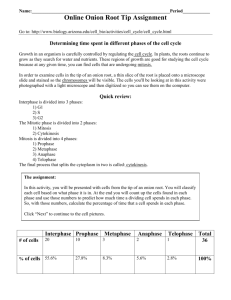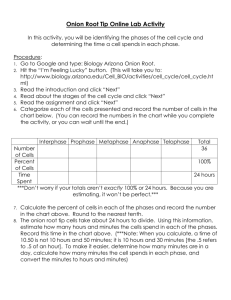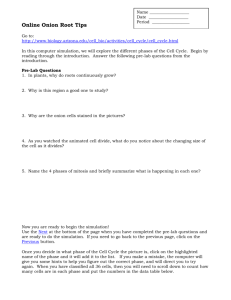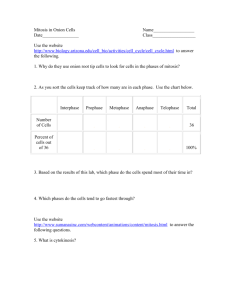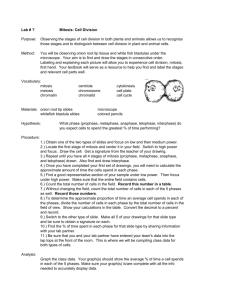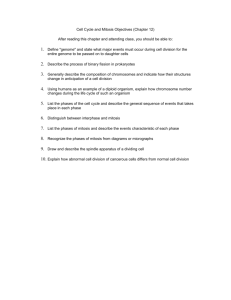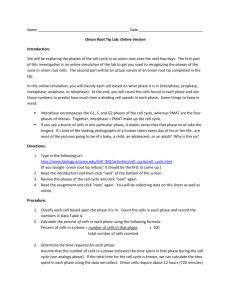lab instructions.
advertisement
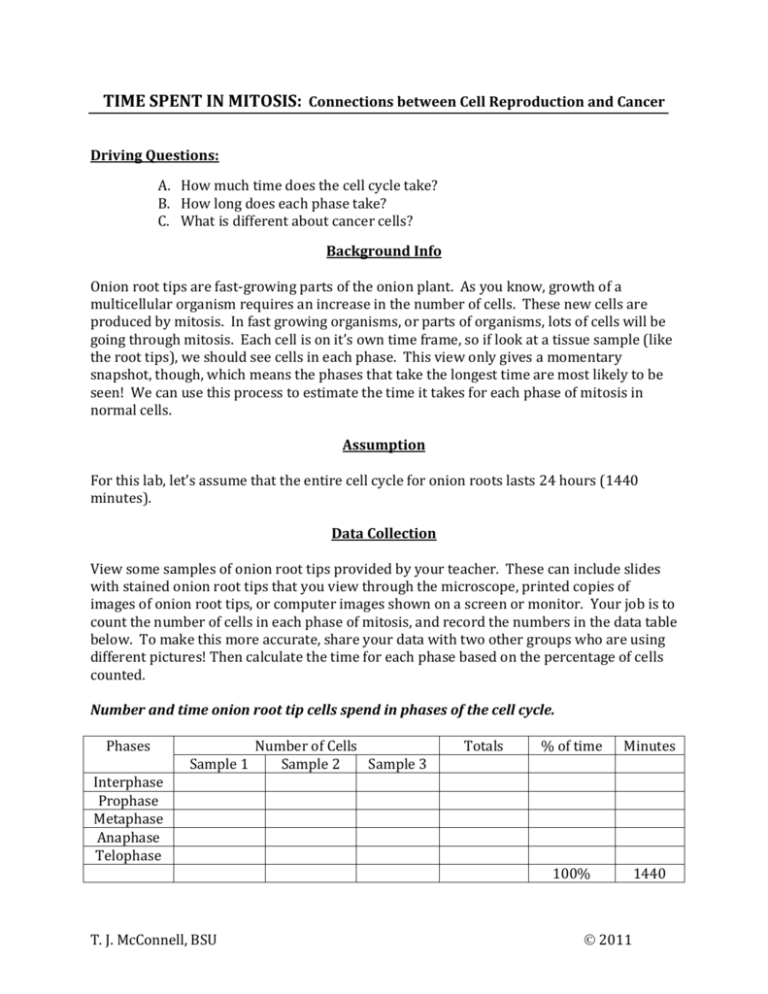
TIME SPENT IN MITOSIS: Connections between Cell Reproduction and Cancer Driving Questions: A. How much time does the cell cycle take? B. How long does each phase take? C. What is different about cancer cells? Background Info Onion root tips are fast-growing parts of the onion plant. As you know, growth of a multicellular organism requires an increase in the number of cells. These new cells are produced by mitosis. In fast growing organisms, or parts of organisms, lots of cells will be going through mitosis. Each cell is on it’s own time frame, so if look at a tissue sample (like the root tips), we should see cells in each phase. This view only gives a momentary snapshot, though, which means the phases that take the longest time are most likely to be seen! We can use this process to estimate the time it takes for each phase of mitosis in normal cells. Assumption For this lab, let’s assume that the entire cell cycle for onion roots lasts 24 hours (1440 minutes). Data Collection View some samples of onion root tips provided by your teacher. These can include slides with stained onion root tips that you view through the microscope, printed copies of images of onion root tips, or computer images shown on a screen or monitor. Your job is to count the number of cells in each phase of mitosis, and record the numbers in the data table below. To make this more accurate, share your data with two other groups who are using different pictures! Then calculate the time for each phase based on the percentage of cells counted. Number and time onion root tip cells spend in phases of the cell cycle. Phases Number of Cells Sample 1 Sample 2 Sample 3 Totals % of time Minutes 100% 1440 Interphase Prophase Metaphase Anaphase Telophase T. J. McConnell, BSU 2011 Displaying Data Use the diagram below to make a chart to display the data you collected. The circle below represents 1440 minutes, and each thin wedge represents 22.5 minutes. Using a different color for each phase of the cell cycle, fill in enough wedges to represent each phase. For instance, a phase that takes 270 minutes would equal 12 wedges. Arrange the phases in order to visualize the time a cell spends in each phase! T. J. McConnell, BSU 2011 Conclusions 1) Which phase of the cell cycle took the most time? The least time? 2) What events take place during the longest phase of the cell cycle? Why are these events so important? Extension Now look at some data collected from chicken stomach cells. Two samples were counted. The first includes normal cells, while the second sample is from a cancerous tumor in the stomach. Cancer cells grow faster than normal cells, so the total time is only 16 hours. Calculate the time spent in each phase for both normal and cancerous cells, then answer the questions that follow. Phases Interphase Prophase Metaphase Anaphase Telophase Normal Cells Number % of Time 900 168 60 24 48 1200 100% Minutes 1440 Number 768 240 84 36 72 1200 Cancer Cells % of Time Minutes 100% 960 Reflection Questions 1. What are the biggest differences between the normal and cancerous cells? 2. What phase is most affected in the cancer cells? 3. Why would this change cause problems in the way the cancer cell functions? 4. How could you use this process to diagnose cancer cells in humans? T. J. McConnell, BSU 2011
